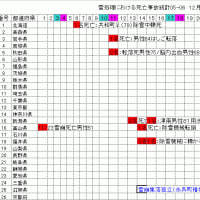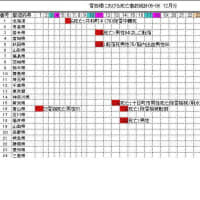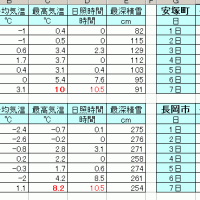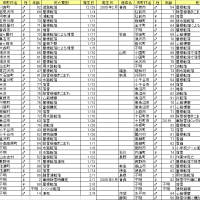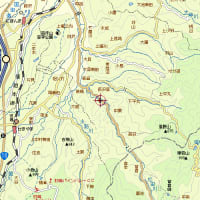Farmers in central South Dakota will stay on the lookout for precipitation and hope that temperatures will stay mild during the early part of the spring season.
The mild temperatures of the past winter meant that the lack of snow cover didn稚 hurt winter wheat crops and livestock owners saw lower than normal losses due to cold weather. Valerie Mitchell, Jones County Extension livestock educator, said farmers in the Murdo area have found that
the local winter wheat crop looks good overall and most livestock owners have enjoyed a mostly uncomplicated calving season.
典he temperatures have been relatively mild in this area so far,・Mitchell said. 典here haven稚 been any prolonged periods of really cold temperatures, so the weather has been easy on the winter wheat crop.
典here have been few problems with the calving season. In fact, we致e had some people who致e reported that their cows are having quite a few twins.・BR>
The S.D. Agricultural Statistics Service reported in early March that 54 percent of the state痴 winter wheat crop was rated good or excellent and 36 percent was rated in fair condition. Only 10 percent of the winter wheat crop was rated poor.
Ag producers have ranked the snow cover for winter wheat as 100 percent poor. The lack of snow cover across most of the state had concerned farmers with winter wheat and alfalfa crops because the snow acts as an insulator, protecting the dormant plants from damage caused by cold temperatures.
Alfalfa snow cover was rated as 95 percent poor and 5 percent adequate in South Dakota. SDASS will make its next crop weather report in early April.
The SDASS also reported that cattle conditions in February were rated as 85 percent good to excellent. Livestock owners said their cattle losses in February were 41 percent below normal, 57 percent normal and 2 percent above normal. The February deaths for new calves and lambs were considered as low ・calf deaths were 96 percent at or below average and lamb deaths were 97 percent at or below average.
The main concern for ag producers is the continuing low levels of precipitation since fall 2004. SDASS reported overall low soil moisture levels that could complicate the planting of spring crops.
Mitchell said farmers in the Murdo area were concerned about low levels of subsoil moisture. Measurable amounts of spring rainfall will help the winter wheat and hay crops and assist with the spring planting. Livestock owners are also hoping that rain will fill their depleted stock dams.
Dr. Dennis Todey, state climatologist at South Dakota State University, said the soil moisture conditions in central South Dakota were helped by some late-season precipitation last fall when some parts of the region received 4 or more inches of rainfall. The fall rains preceded the region痴 dry winter and helped crops make it through the winter, but due to the low amount of snow this winter, many fields are in need of spring rainfall.
According to Todey, information provided by the U.S. Drought Monitor, a service provided by the University of Nebraska-Lincoln, indicates that most of central South Dakota currently has a drought intensity of D0, or abnormally dry conditions. The U.S. Drought Monitor also indicates that moderate drought conditions, or D1 drought intensity, exists in Hughes and Stanley counties and spreads westward across the state. The monitor measures drought intensity on a scale from D0 to D4, ranging from abnormally dry to exceptional drought.
典he Climate Prediction Center outlooks for the summer have given little reason for optimism, because they are hinting at slightly cooler and wetter conditions during the May-August period,・Todey said.
Todey said the weather indicators are not strong for a wet summer, so the rainfall that central South Dakota receives will probably not end the drought conditions. At best, the weather might ease some of the effects of the drought.
He predicted that the lack of snowfall during last winter will continue to provide problems due to the small amount of winter run-off. The snowfall conditions in Montana and northern Wyoming will provide little help in restoring normal water levels to the Oahe Reservoir.
The Capital Jounal SD,USA
The mild temperatures of the past winter meant that the lack of snow cover didn稚 hurt winter wheat crops and livestock owners saw lower than normal losses due to cold weather. Valerie Mitchell, Jones County Extension livestock educator, said farmers in the Murdo area have found that
the local winter wheat crop looks good overall and most livestock owners have enjoyed a mostly uncomplicated calving season.
典he temperatures have been relatively mild in this area so far,・Mitchell said. 典here haven稚 been any prolonged periods of really cold temperatures, so the weather has been easy on the winter wheat crop.
典here have been few problems with the calving season. In fact, we致e had some people who致e reported that their cows are having quite a few twins.・BR>
The S.D. Agricultural Statistics Service reported in early March that 54 percent of the state痴 winter wheat crop was rated good or excellent and 36 percent was rated in fair condition. Only 10 percent of the winter wheat crop was rated poor.
Ag producers have ranked the snow cover for winter wheat as 100 percent poor. The lack of snow cover across most of the state had concerned farmers with winter wheat and alfalfa crops because the snow acts as an insulator, protecting the dormant plants from damage caused by cold temperatures.
Alfalfa snow cover was rated as 95 percent poor and 5 percent adequate in South Dakota. SDASS will make its next crop weather report in early April.
The SDASS also reported that cattle conditions in February were rated as 85 percent good to excellent. Livestock owners said their cattle losses in February were 41 percent below normal, 57 percent normal and 2 percent above normal. The February deaths for new calves and lambs were considered as low ・calf deaths were 96 percent at or below average and lamb deaths were 97 percent at or below average.
The main concern for ag producers is the continuing low levels of precipitation since fall 2004. SDASS reported overall low soil moisture levels that could complicate the planting of spring crops.
Mitchell said farmers in the Murdo area were concerned about low levels of subsoil moisture. Measurable amounts of spring rainfall will help the winter wheat and hay crops and assist with the spring planting. Livestock owners are also hoping that rain will fill their depleted stock dams.
Dr. Dennis Todey, state climatologist at South Dakota State University, said the soil moisture conditions in central South Dakota were helped by some late-season precipitation last fall when some parts of the region received 4 or more inches of rainfall. The fall rains preceded the region痴 dry winter and helped crops make it through the winter, but due to the low amount of snow this winter, many fields are in need of spring rainfall.
According to Todey, information provided by the U.S. Drought Monitor, a service provided by the University of Nebraska-Lincoln, indicates that most of central South Dakota currently has a drought intensity of D0, or abnormally dry conditions. The U.S. Drought Monitor also indicates that moderate drought conditions, or D1 drought intensity, exists in Hughes and Stanley counties and spreads westward across the state. The monitor measures drought intensity on a scale from D0 to D4, ranging from abnormally dry to exceptional drought.
典he Climate Prediction Center outlooks for the summer have given little reason for optimism, because they are hinting at slightly cooler and wetter conditions during the May-August period,・Todey said.
Todey said the weather indicators are not strong for a wet summer, so the rainfall that central South Dakota receives will probably not end the drought conditions. At best, the weather might ease some of the effects of the drought.
He predicted that the lack of snowfall during last winter will continue to provide problems due to the small amount of winter run-off. The snowfall conditions in Montana and northern Wyoming will provide little help in restoring normal water levels to the Oahe Reservoir.
The Capital Jounal SD,USA










